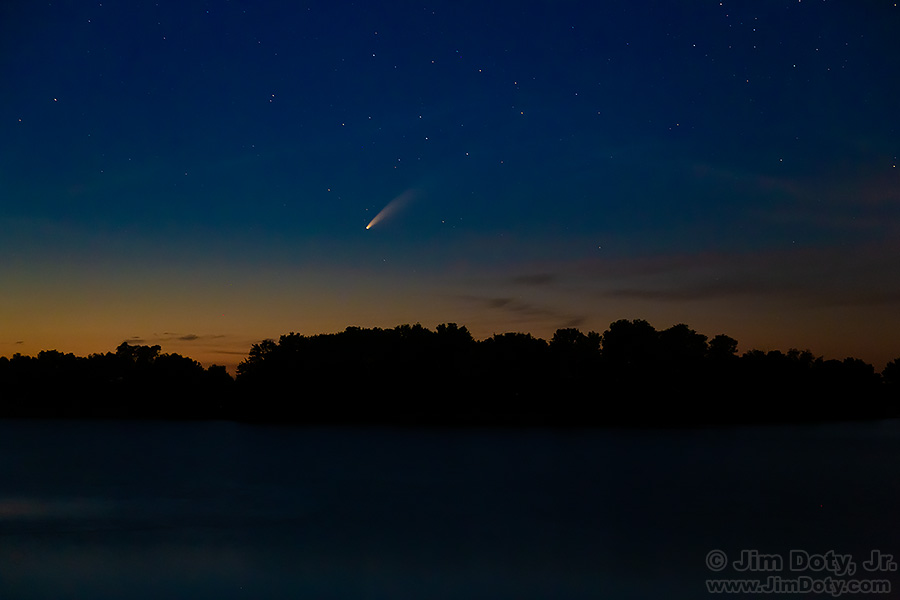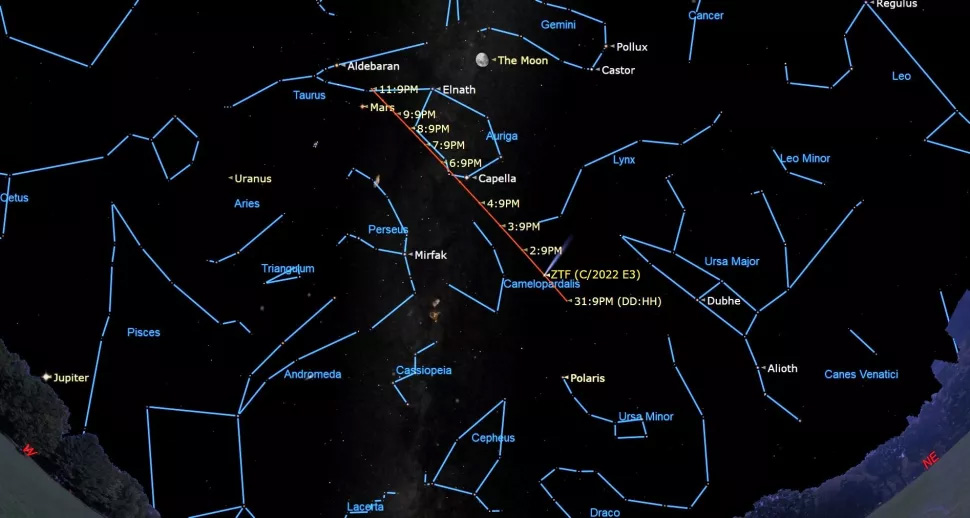
The key to photographing Comet ZTF is to know where to look. In the evening around 9 pm it is above the North Star and a little to the left. It moves higher in the sky every night and is almost straight overhead by February 5. For details and the best evening sky map I could find, read this article. Once you have found the comet with your naked eyes or with binoculars, you can photograph it.

HOW TO PHOTOGRAPH COMET ZTF
Camera and Lens Settings
Put your camera on a tripod and point it above the northern horizon in the direction of the comet. Start with an ISO of 800 and a lens aperture of f/4. Try shutter speeds in one stop increments of 15, 8, 4, and 2 seconds. If 15 seconds is too dark try 30 seconds. Experiment. You might need to change to higher ISO settings like 1600 and 3200.
Lens Focal Length
The longer the lens focal length you use, the bigger the comet will be, but you will have less sky area and less stars. A shorter focal length will give you more sky and stars but a shorter comet. The photo above was photographed at 70mm so you get less sky but a bigger comet. Experiment with different focal lengths from 70mm to as wide as 24 mm.
If this is your first time doing this I suggest you start with a focal length around 50mm.
Focusing on Infinity
This is your biggest technical challenge. Your camera can’t autofocus on the night sky, and at night it is too dark through your camera’s viewfinder to manually focus.
If your lens isn’t focused on infinity, your stars will be little round blobs instead of points of light. So focusing your lens on infinity is important. This article tells you how to do that.
One simple way to do this is to show up early, focus on the distant horizon, turn off autofocus and don’t touch the focus ring for the rest of the night. Don’t touch the zoom ring either.
Don’t forget, when you are using a zoom lens if you change the focal length you change the focus point. If you are focused on infinity at 50mm and you zoom to 70mm, the lens is no longer focused on infinity so you will need to refocus.
Links
How To Find and See Comet ZTF (C/2022 E3)
Comet ZTF at EarthSky with a morning sky map.
Comet ZTF at Sky and Telescope
